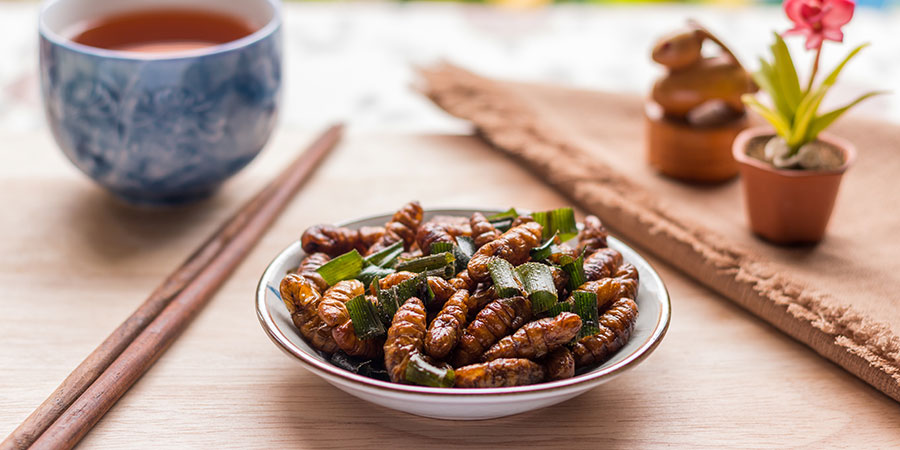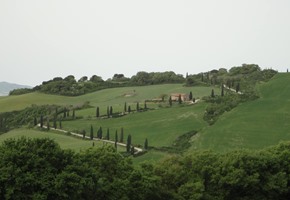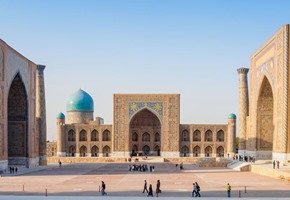With recent reports about the rates and effects of global warning, our over reliance on plastic packaging and articles appearing in the press about the west needing to reduce its consumption of meat by a whopping 90%, we thought we'd give you a heads up about some of the most environmentally friendly foods out there (if you ignore the carbon emissions required by the journey). All we ask is you read with an open mind, and remember that looks can certainly be deceiving.
Hanoi - crickets
Vietnam has no qualms about eating insects, and rightly so considering they're high in protein, don't require all the feed, water and transportation that animals used for food products use on their journey from the farm to your plate, and are cheap. Also, if you can get past the ick factor, they're surprisingly delicious. In the busy streets of Hanoi, you'll see plenty of street vendors selling indiscernible creepy crawlies but many of the restaurants do too, and we would recommend a sit down meal for your first experience. When I visited the Vietnamese capital, one eatery had an impressive list of creatures to try; locusts, crickets, ants, silkworm cocoons, stink bugs…but I decided to start simple and ordered crickets served with fried onions, and by goodness did it taste good! Like crispy bites of bacon they were cooked to perfection (not that I could really tell), were arranged appetisingly on the plate and it seemed I was served an entire colony for the very reasonable price printed on the menu.
Sardinia - Sardines
Where better to scoff this delicacy than the island that shares its name? All across coastal Italy you'll be able to order a serving of this scrumptious fish dish, but Sardinia seems like it should be the go-to spot. Often served very simply, fresh from the sea, deep fried and whole with a slice of lemon, sardines are excellent for your skin, your bones and your brains, being filled to the brim with Omega-3 fatty acids, calcium and vitamins D and B12 which makes them a great meat substitute of you're trying out flexitarianism. And as a fairly ubiquitous resident of the waters surrounding the Mediterranean, they're in no danger of being overfished…yet!
America - turkey bacon
I have close family living in Los Angeles, and whenever I go to visit one of my usual complaints is that they're sausages and bacon are completely inferior to the thick, meaty varieties I'm used to buying back home. But it looks like, for once, the Americans were on to a good thing. While any kind of bacon should be eaten and enjoyed in moderation, the benefits of turkey bacon are that as a leaner meat it has a lower calorie and saturated fat content. And the environment is also healthier when we choose turkeys over other meat products. As Jeremey Hall, group technician at Bernard Matthews puts it, "You can buy two meals using turkey meat and still halve your carbon footprint in comparison with one meal made with beef," he said. "That's quite a strong and powerful position and we can now pass that view to consumers and promote the environmental benefits of turkey."
India - Lentil dhal
In 2007, the UN ranked India as the country with the lowest consumption of meat in the world, and with such flavoursome spices used throughout the sub-continent, you can grab a tasty vegetarian (and often vegan too!) treat from street vendors and upmarket restaurants alike. Some notable winners include Chole bhature, curried chickpeas served with fried bread, and Baingan bharta, a thick, sweet-sour casserole of roasted aubergine. But one of the dishes that's most well-known across the globe, thanks to its versatility and yumminess, is lentil dhal, a thick almost stew like curry that is quick and easy to make, even at home. And lentils are a fantastic superfood, a great source of both fibre and protein with a very low carbon footprint (43 times smaller than beef). They also need very little water to flourish, clean and fortify the soil they've grown in for future residents and if that wasn't enough, they're also super cheap for farmers to grow and for consumers to buy - there's no downside!





